
Perigord Adventure & Loisirs Canoe, Beynac-et-Cazenac
Enjoy a relaxing day close to nature as you canoe along the river and explore the waterways of this UNESCO World Biosphere Reserve.

© Mas del Lum

© Mas del Lum
Peaceful beauty encapsulated
The B&B is part of a 17th & 18th Century hamlet and is nestled into the stunning Natural Park of Quercy. It is surrounded by 10 acres of land, has a flourishing and meticulously designed garden and also has a truly unique natural swimming pool.
The Gite is made up of a number of buildings including 5 guest rooms, some of which have their own private entrance and outdoor garden space. Cleanly decorated and showcasing the buildings wooden beams and stone walls, the rooms are an irresistible place to retreat and spend some quality down time.
Breakfast is served each morning and in the warmer months can be enjoyed outdoors on the terrace while overlooking the majestic Cele river valley. There is also a well equipped kitchen at your disposal. In colder months, inside is an equally appealing prospect with comfortable seating areas arranged around vast open fireplaces.
A truly special feature of this property, the pool is completely natural with no added chemicals. It has plants growing alongside which naturally filter and clean the water. Surrounding the pool is a wooden sun deck and grassy area to relax and take everything in.
All children are welcome, but there are additional costs for those requiring a cot or extra bed in a room.

Enjoy a relaxing day close to nature as you canoe along the river and explore the waterways of this UNESCO World Biosphere Reserve.
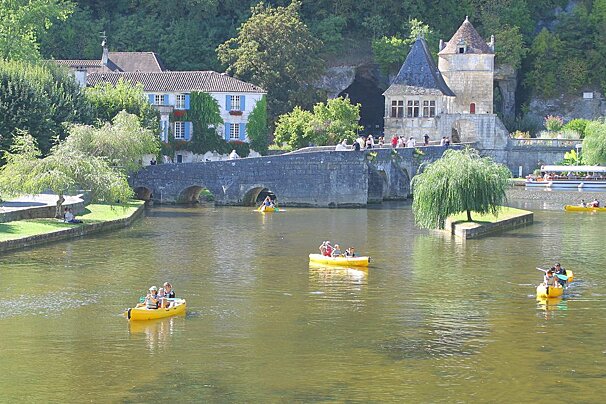
Not only can you take a relaxing journey down the Dronne river in a canoe but you can try your hand at stand up paddle boarding or take to the cliffs and trees for some adventure above ground.

Enjoy a single or multi-day trip down the river Dordogne to town such as Beynac, Castelnaud, Montfort and Fayac.
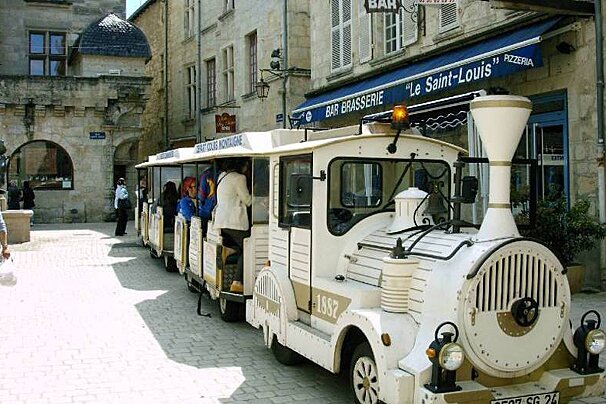
Discover the art and history of the city of Perigueux, exploring the ancient city, old town and admiring the beauty.
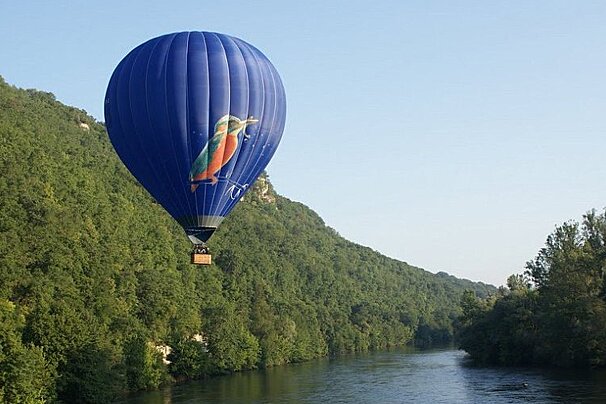
Come fly over the Dordogne, Perigord, castles, manors, fortresses, the valleys of the Dordogne and Vézère, discover it in all its charm.
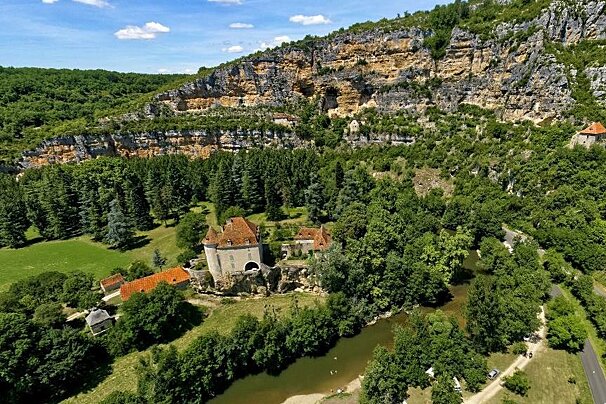
The limestone plateaus of the Causses du Quercy are well known for their rich biodiversity, culture and history. Here you will find plenty of outdoor activities for all the family to enjoy.

This elegant and sophisticated two Michelin star restaurant offers creative dishes designed by chef Cédric Béchade, who plays with colours and textures in his cuisine.
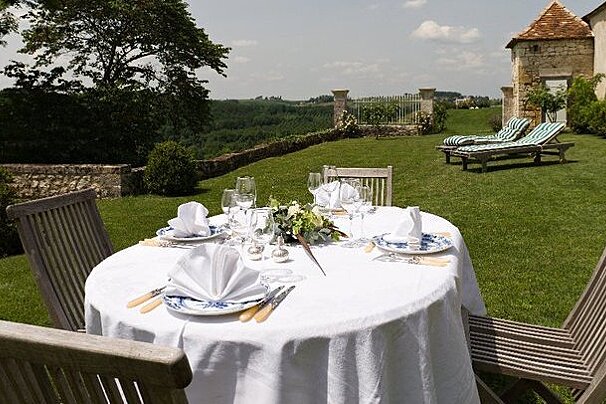
The dining rooms allow for views of the surrounding vineyards and rolling hills. Drinks can also be enjoyed in the small library or among the chestnut trees.

With a terrace set alongside the Vezerie river and within a hotel clad in Virginia Creeper and decorated with heart, warmth and style, the restaurant is hugely inviting.
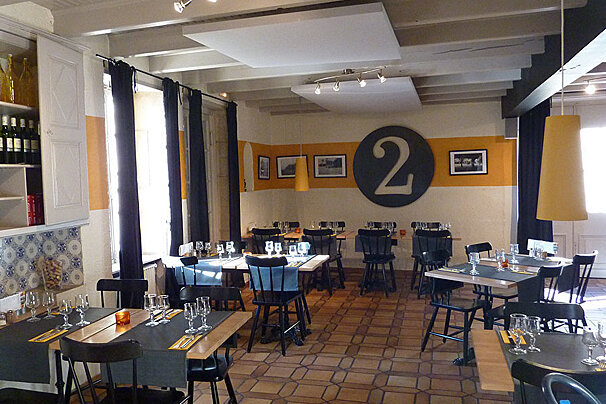
In conjunction with the Hôtel Edward 1er, you would expect the restaurant to maintain the high standards and quality that the hotel upholds. That it certainly does, with twists on French classics in a spacious and friendly dining area, set inside an historical stone building, typical of the Monpazier village and surrounding region.

The restaurant boasts an innovative menu with a focus on fine local fare and seemless service. The very word Les Merles stands for honesty and delightfulness, which is reflected throughout the dining experience.
Michelin star restaurant with 14 immaculate rooms in the Lacave region.
This museum is dedicated to Figeac-born Egyptologist Jean-François Champollion who was the first person to interpret Egyptian hieroglyphics from the Rosetta Stone in 1822. As well as charting the course of his short life, this museum depicts the history of script from a number of different languages and has a collection of ancient Egyptian relics.
This prehistoric cave is situated on a limestone plateau in the Lot valley, in an area speckled with prehistoric remains and megalithic monuments. The cave was discovered in 1965 and is a remarkable subterranean museum. Over 400 metres in length, it preserves human footprints, clay quarries, fireplaces, tools, and many bones. Some of the cave network was used as tombs; nearly 30 skeletons have been discovered dating as far back as the Copper Age. There is also a museum with a good archaeological collection.
In Cajarc, the George Pompidou arts centre holds a number of significant art exhibitions each year designed at promoting new trends in contemporary art. It was founded in 1989 and named after the former Prime Minister who spent time here.
Originally built by the lords of La Popie from the 9th century onwards, the château was sold to the de Gourdon family in the 12th century where it remained until the 17th century. Significant restoration work was undertaken in the late 19th and early 20th centuries to maintain this Renaissance palace. Today, a number of Renaissance frescoes discovered over the years can be viewed in its rooms.
This huge cave , more than two kilometres long, has seven large halls open to the public. Its lower prehistoric chambers were discovered by teenagers in the 1920s. They contain prehistoric paintings and sketches, human footprints and limestone rock formations which include cave pearls. The huge Chapelle des Mammoths is the first stop, which contains impressive art that uses the contours of the rock perfectly. There are literally hundreds of drawings. The museum is good, displaying a diverse collection of artefacts.
Literally titled the 'Unusual Museum', it lives up to its name. Its creator, Bertrand Chenu, is humorous and inventive man who has transformed everyday objects, hanging them from the cliffside, into French phrases, puns or quirks of life. A strange but interesting detour from the usual tourist attractions in the region!

The riverside town of Saint-Céré is a lovely place to base yourself for excursions in the region. The La Bave river winds its way through the centre of the town and its old buildings have been carefully restored, retaining their timber vaulting or Renaissance stonework.

Picturesque village typical of Quercy. The traditional houses have corbelled fronts, brown-tiled roofs and pigeon lofts built into their walls.

Perched on the side of a cliff, in a gorge above the river Alzou, this medieval town has a breathtaking setting.

Carennac has been previously voted 'One of the 'Most Beautiful Villages in France' and it's easy to see why. The blonde stone and red-brown roofs of its buildings have tall chimneys and are adorned with creepers that turn red in the autumn.

Formerly the capital of the old province of Quercy, Cahors is the largest town in the Lot valley. The site was inhabited by the Cadurci tribe in Roman-Gaul times.

This medieval town on a bend in the Dordogne grew around its 9th century Benedictine abbey of Saint-Pierre.